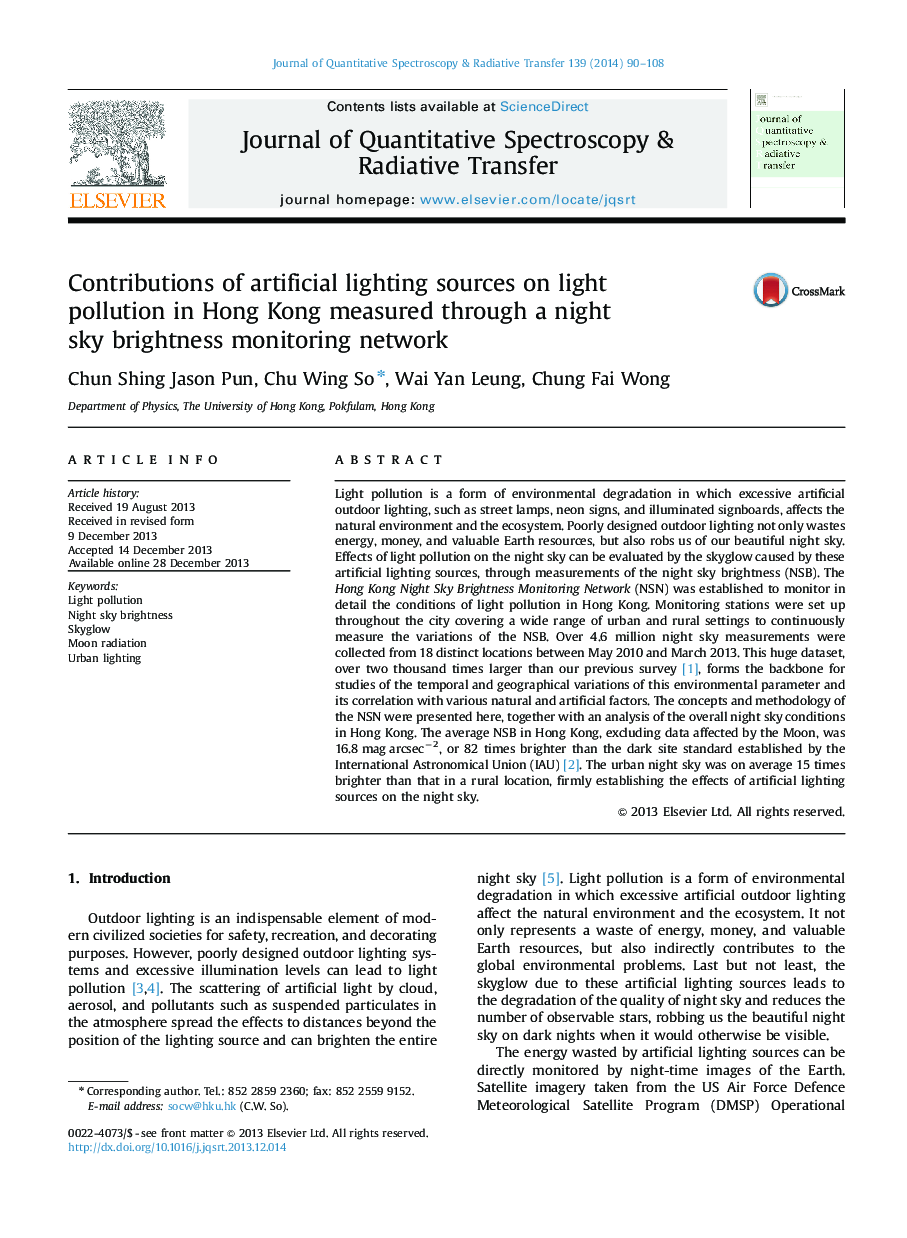| کد مقاله | کد نشریه | سال انتشار | مقاله انگلیسی | نسخه تمام متن |
|---|---|---|---|---|
| 5428480 | 1508676 | 2014 | 19 صفحه PDF | دانلود رایگان |
- Light pollution affects the natural environment and ecosystem globally.
- An observing network was established for long-term night sky brightness monitoring.
- 4.6 million measurements from 18 locations in Hong Kong from 5/2010 to 3/2013.
- Average night sky in Hong Kong 82 times brighter than dark sky standard.
- Urban night sky on average 15 times brighter than in a rural location.
Light pollution is a form of environmental degradation in which excessive artificial outdoor lighting, such as street lamps, neon signs, and illuminated signboards, affects the natural environment and the ecosystem. Poorly designed outdoor lighting not only wastes energy, money, and valuable Earth resources, but also robs us of our beautiful night sky. Effects of light pollution on the night sky can be evaluated by the skyglow caused by these artificial lighting sources, through measurements of the night sky brightness (NSB). The Hong Kong Night Sky Brightness Monitoring Network (NSN) was established to monitor in detail the conditions of light pollution in Hong Kong. Monitoring stations were set up throughout the city covering a wide range of urban and rural settings to continuously measure the variations of the NSB. Over 4.6 million night sky measurements were collected from 18 distinct locations between May 2010 and March 2013. This huge dataset, over two thousand times larger than our previous survey [1], forms the backbone for studies of the temporal and geographical variations of this environmental parameter and its correlation with various natural and artificial factors. The concepts and methodology of the NSN were presented here, together with an analysis of the overall night sky conditions in Hong Kong. The average NSB in Hong Kong, excluding data affected by the Moon, was 16.8 mag arcsecâ2, or 82 times brighter than the dark site standard established by the International Astronomical Union (IAU) [2]. The urban night sky was on average 15 times brighter than that in a rural location, firmly establishing the effects of artificial lighting sources on the night sky.
Journal: Journal of Quantitative Spectroscopy and Radiative Transfer - Volume 139, May 2014, Pages 90-108
